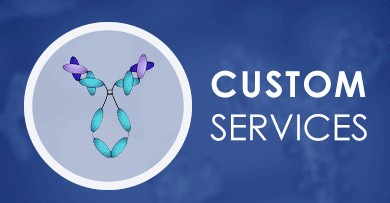+ Filter
 Loading...
Loading...

CD5L
 Loading...
Loading...Anti-CD5L Products
- Human Anti-CD5L Recombinant Antibody (VS-0723-WK121) (VS-0723-WK121)
-
- Derivation: Chimeric (rabbit/human)
- Species Reactivity: Human
- Type: Chimeric (rabbit/human) IgG1
- Application: FC
-
- Species Reactivity: Human
- Application: WB
- Anti-CD5L Immunohistochemistry Kit (VS-0525-XY1205)
-
- Species Reactivity: Human
- Target: CD5L
- Application: IHC
-
- Species Reactivity: Mouse
- Type: Rabbit IgG
- Application: ELISA
-
- Species Reactivity: Mouse
- Type: Rabbit IgG
- Application: ELISA
View More Products
Can't find the products you're looking for? Try to filter in the left sidebar.Filter By Tag
More Infomation
Our customer service representatives are available 24 hours a day, from Monday to Sunday. Contact Us
For Research Use Only. Not For Clinical Use.
Background
Secreted protein that acts as a key regulator of lipid synthesis: mainly expressed by macrophages in lymphoid and inflamed tissues and regulates mechanisms in inflammatory responses, such as infection or atherosclerosis. Able to inhibit lipid droplet size in adipocytes. Following incorporation into mature adipocytes via CD36-mediated endocytosis, associates with cytosolic FASN, inhibiting fatty acid synthase activity and leading to lipolysis, the degradation of triacylglycerols into glycerol and free fatty acids (FFA). CD5L-induced lipolysis occurs with progression of obesity: participates in obesity-associated inflammation following recruitment of inflammatory macrophages into adipose tissues, a cause of insulin resistance and obesity-related metabolic disease. Regulation of intracellular lipids mediated by CD5L has a direct effect on transcription regulation mediated by nuclear receptors ROR-gamma (RORC). Acts as a key regulator of metabolic switch in T-helper Th17 cells. Regulates the expression of pro-inflammatory genes in Th17 cells by altering the lipid content and limiting synthesis of cholesterol ligand of RORC, the master transcription factor of Th17-cell differentiation. CD5L is mainly present in non-pathogenic Th17 cells, where it decreases the content of polyunsaturated fatty acyls (PUFA), affecting two metabolic proteins MSMO1 and CYP51A1, which synthesize ligands of RORC, limiting RORC activity and expression of pro-inflammatory genes. Participates in obesity-associated autoimmunity via its association with IgM, interfering with the binding of IgM to Fcalpha/mu receptor and enhancing the development of long-lived plasma cells that produce high-affinity IgG autoantibodies (By similarity). Also acts as an inhibitor of apoptosis in macrophages: promotes macrophage survival from the apoptotic effects of oxidized lipids in case of atherosclerosis (PubMed:24295828). Involved in early response to microbial infection against various pathogens by acting as a pattern recognition receptor and by promoting autophagy (PubMed:16030018, PubMed:24223991, PubMed:24583716, PubMed:25713983).
Protein class
Plasma proteins
Predicted location
Secreted
Single cell type specificity
Group enriched (Kupffer cells, Hofbauer cells)
Immune cell specificity
Not detected in immune cells
Cell line specificity
Not detected
Interaction
Interacts with FASN; the interaction is direct (By similarity). Interacts with IgM; protecting CD5L from renal excretion and leading to increased CD5L levels in circulating blood (PubMed:8034987, PubMed:24804991).
More Types Infomation



